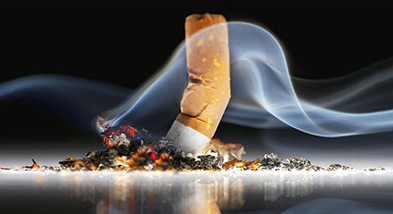
National Report: Alaska Ranks 2nd in Protecting Kids from Tobacco
December 11, 2014
The report challenges states to do more by shining the spotlight on Florida, which has cut its high school smoking rate to a record low 7.5 percent. The report details the lives and health care dollars each state could save if it brought its teen smoking rate down to Florida's. If Alaska reduced its high school smoking rate from the current 10.6 percent to 7.5 percent, it would prevent 9,940 kids from becoming adult smokers, saving 3,500 lives and $174 million in future health care costs. Today in Alaska, tobacco annually claims 600 lives and costs the state $438 million in health care bills. Other key findings for Alaska include:
Today's report, titled "Broken Promises to Our Children: A State-by-State Look at the 1998 State Tobacco Settlement 16 Years Later," was released by the Campaign for Tobacco-Free Kids, American Heart Association, American Cancer Society Cancer Action Network, American Lung Association, the Robert Wood Johnson Foundation and Americans for Nonsmokers' Rights. The report assesses whether the states kept their promise to use a significant portion of their settlement funds – estimated to total $246 billion over the first 25 years – to fight tobacco use. The states also collect billions of dollars more each year from tobacco taxes. Alaska has consistently ranked high in funding tobacco prevention programs. As a result, Alaska has cut the state's high school smoking rate by 40 percent since 2007, to just 10.6 percent. "Alaska is setting an example for the nation with its strong and sustained commitment to fighting tobacco use," said Matthew L. Myers, President of the Campaign for Tobacco-Free Kids. "Alaska's progress shows that it is within our reach to create a tobacco-free generation. To keep making progress, Alaska's leaders must maintain their commitment to tobacco prevention and also pass a statewide smoke-free law that applies to all workplaces, restaurants and bars." Nationally, the report finds that:
Evidence shows tobacco prevention and cessation programs work to reduce smoking, save lives and save money. One study found that during the first 10 years of its tobacco prevention program, the state of Washington saved more than $5 in tobacco-related hospitalization costs for every $1 spent on the program. Tobacco use is the No. 1 cause of preventable death in the United States, killing more than 480,000 people and costing the nation at least $289 billion in health care bills and lost productivity each year.
Edited by Mary Kauffman, SitNews
On the Web: Broken Promises to Our Children: A State-by-State Look at the 1998 State Tobacco Settlement 16 Years Later -- The full report and state-specific information
Source of News:
|
|||
